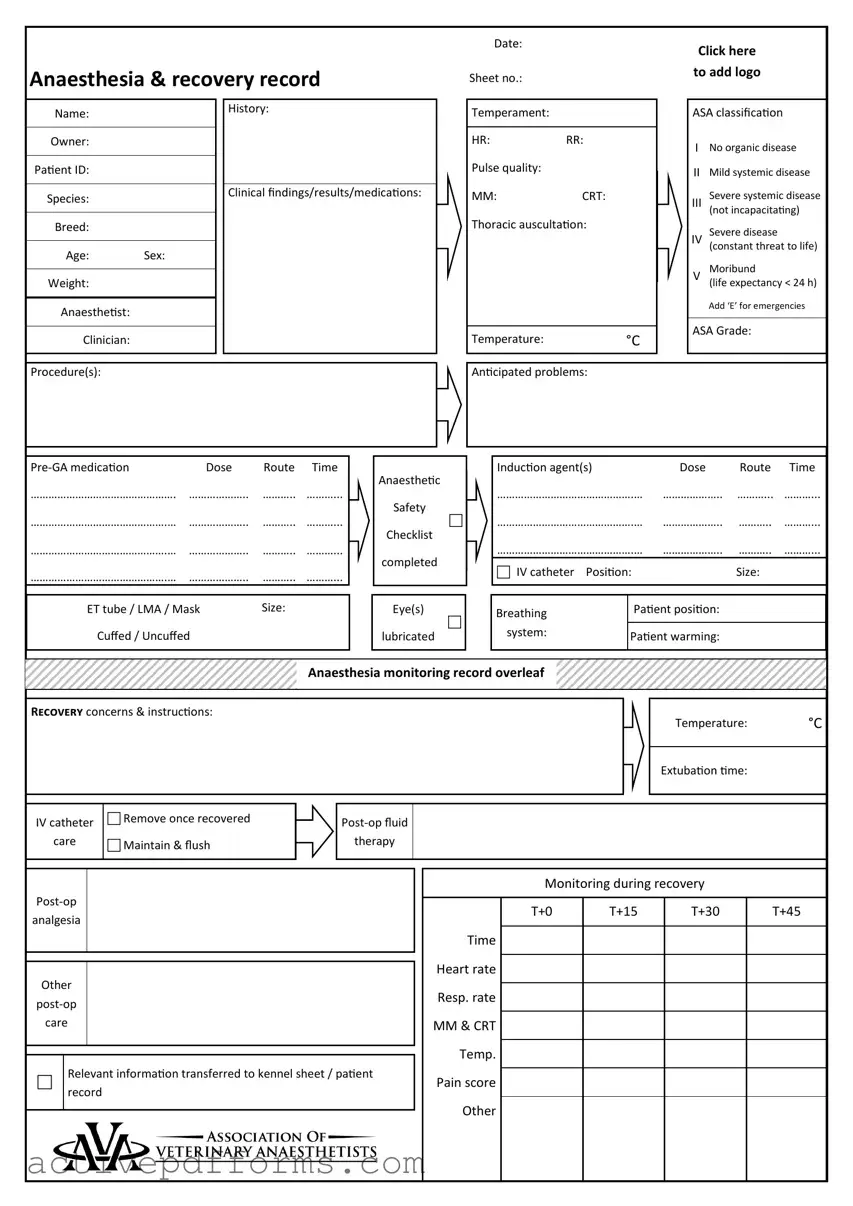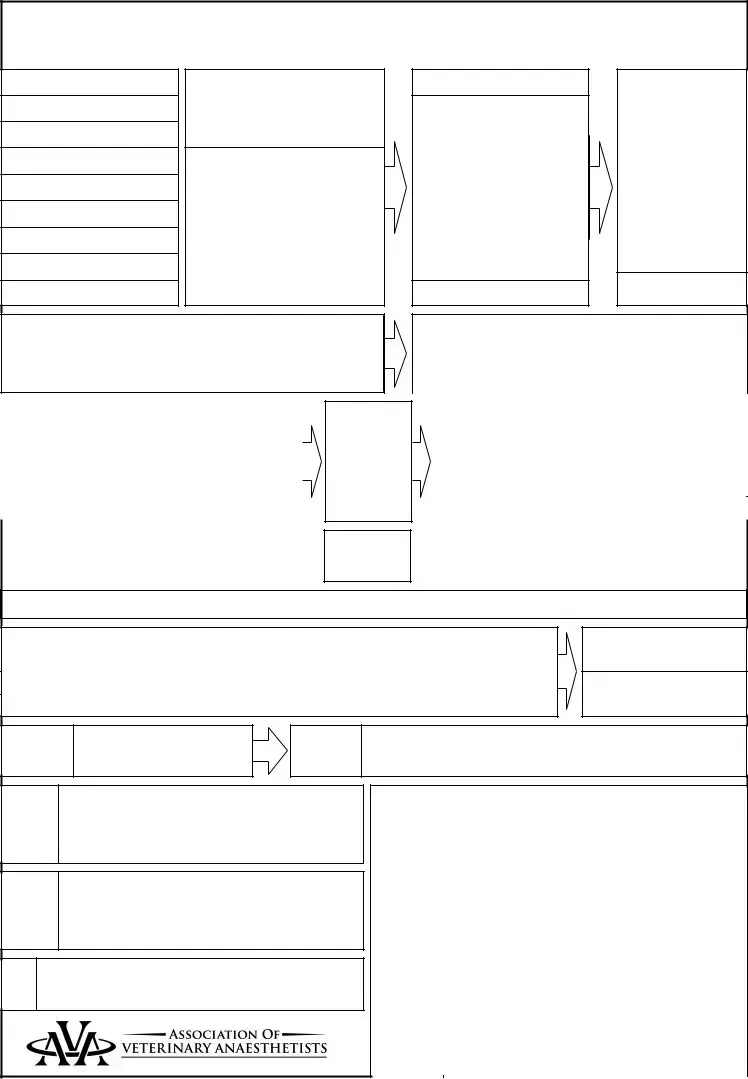- What is an Anesthesia Record form?
An Anesthesia Record form is a detailed document used by veterinarians and anesthesiologists to note down all relevant information about the anesthesia administered before, during, and after a surgical procedure. This includes details about the patient such as their medical history, the medications given, specifics of the anesthesia process like induction agents and their dosages, and the patient’s recovery process.
- Why is maintaining an Anesthesia Record important?
Maintaining an accurate Anesthesia Record is crucial for multiple reasons. It ensures continuity of care by providing a comprehensive overview of the patient's response to anesthesia, helps in the assessment of the anesthesia protocol's effectiveness, and improves the safety and quality of care. Additionally, it serves as a legal document that can be referenced in case of any complications or disputes.
- What does ASA classification mean on the form?
The ASA classification stands for the American Society of Anesthesiologists' physical status classification system. It evaluates the fitness of a patient prior to surgery. Ranging from I to V, with an addition of 'E' for emergency cases, it helps in assessing the risk involved in the anesthesia process. For instance, I indicates a healthy patient with no organic disease, while V refers to a moribund patient who is not expected to survive without the surgery.
- How is patient warming noted on the Anesthesia Record?
Patient warming is a critical aspect noted on the Anesthesia Record. It details the method and equipment used to maintain the patient's body temperature during the procedure. Keeping the patient warm helps in preventing hypothermia, which is a common risk during anesthesia due to impaired thermoregulation.
- What information is included under the 'Anaesthesia monitoring record'?
The 'Anaesthesia monitoring record' section is designed to document vital signs and other relevant parameters throughout the anesthesia process. This typically includes the heart rate, respiratory rate, blood pressure, and body temperature at various times, along with pain scores and any additional observations critical for assessing the patient’s condition and response to anesthesia.
- How are pre-GA medications recorded?
Pre-General Anesthesia (pre-GA) medications are recorded by noting the name of each medication, the dose administered, the route of administration (e.g., oral, IV, IM), and the time given. This part of the record is crucial for planning the anesthesia protocol and for future reference, to understand which premedications were effective or if any adverse reactions occurred.
- What does the 'E' symbol stand for in ASA classification?
The 'E' symbol in the ASA classification stands for 'Emergency.' It's added to any of the ASA physical status levels (I-V) to indicate that the procedure needs to be performed urgently. An emergency ASA classification highlights the increased risk associated with administering anesthesia under less-than-ideal circumstances, often with limited time for preparation.
- What role does the Anesthetist play according to the Anesthesia Record?
The Anesthetist is responsible for administering the anesthesia and monitoring the patient's physiological status throughout the procedure. This includes selecting appropriate anesthetic agents and methods, managing the patient's airway, and ensuring they remain stable and pain-free during surgery and into recovery. Their name is documented on the form for accountability and reference.
- How is the anticipated problems section used?
The 'Anticipated problems' section is used to note any potential challenges or risks identified prior to administering anesthesia. This could include anything from the patient's specific health concerns that might affect anesthesia to technical difficulties that may be encountered based on the procedure's nature. Documenting anticipated problems helps in preparing for and mitigating these risks as much as possible.
- What is the significance of documenting the extubation time?
Documenting the extubation time – the moment when the endotracheal tube is removed after anesthesia – is significant for several reasons. It helps in monitoring the patient’s recovery from anesthesia, ensuring that the airway has been successfully managed, and reducing the risk of complications associated with premature or delayed extubation. It's a critical timestamp that marks a major step in the patient's return to normal respiration and consciousness.


